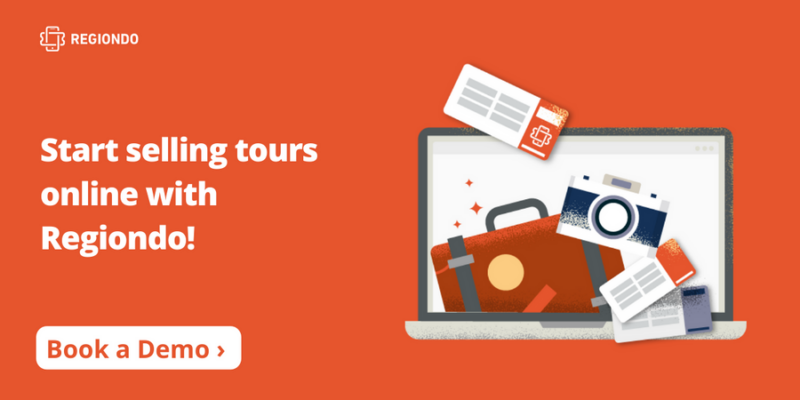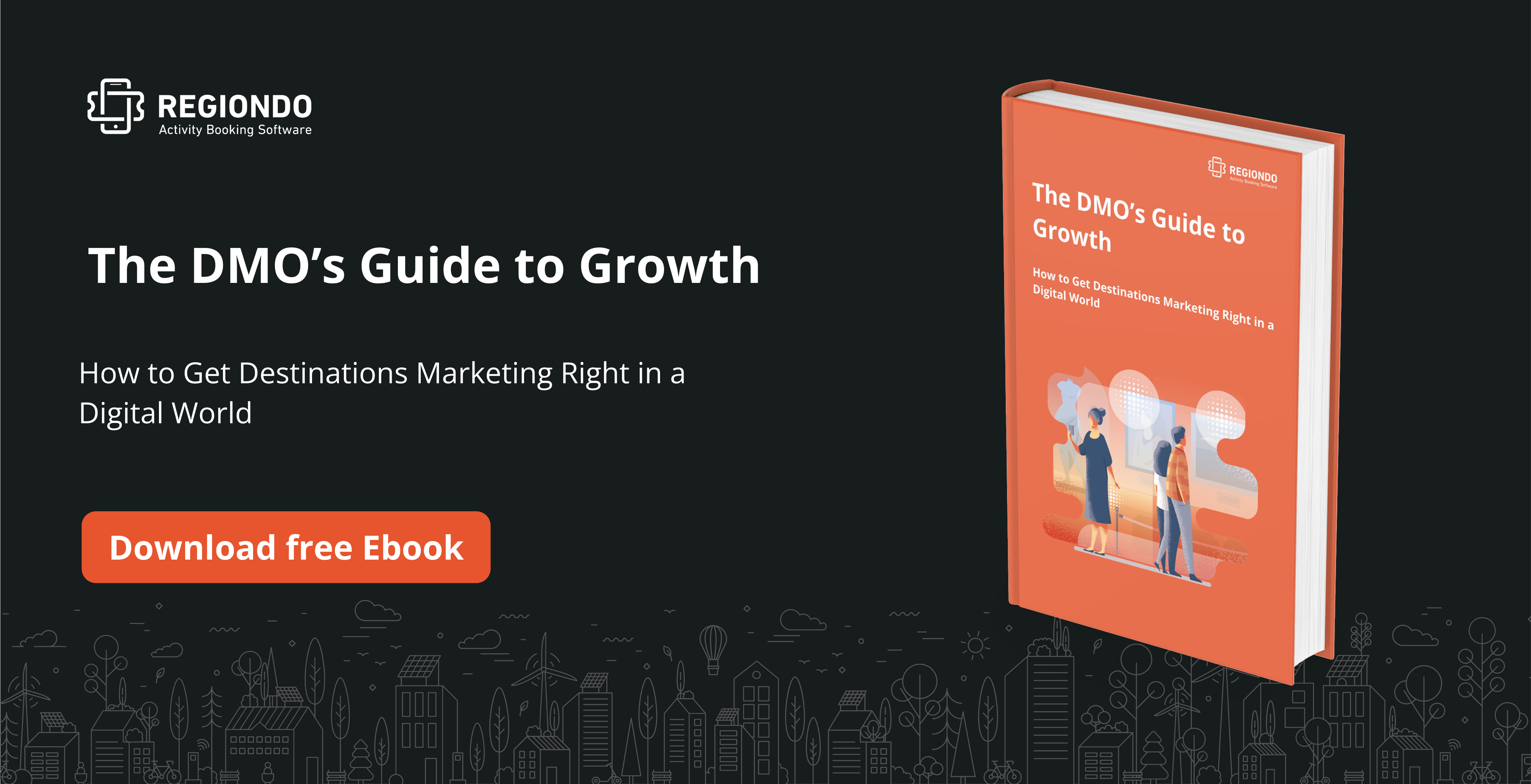We already looked at destination marketing and the challenges ahead.
We also suggested three strategies there to deal with the changing landscape.
In this post, we’ll go deeper into the world of destination marketing strategies.
We’ll explore the difference between a strategy and a tactic. We’ll also look at the key things to consider ahead of creating your destination marketing strategy.
The main part of the post are 10 destination marketing strategies to help you win in the long run.
Ready? Let’s go.
Strategy vs Tactics
So the first thing we need to highlight is the difference between a strategy and a tactic.
A destination marketing strategy is a plan to accomplish a key objective, usually attracting more visitors to a city, region, or country.
Strategies are based on principles and can be viewed as the overall “game plan”.
On the other hand, tactics are the specific means by which a strategy is executed.
For example, you can devise a strategy to attract more tourists. One of the tactics involved could be to create a social media campaign in a specific target country.
This illustrates the main difference in that strategies are high-level plans for accomplishing a goal, while tactics are the specific ways you can employ to reach that goal.
Now that we have this out of the way, let’s move on to the strategic considerations you should make in order to get more success as a DMO.
What to consider before developing your strategy
Before choosing a specific strategy, it’s important to do the groundwork first.
First, every DMO needs a booking system to allow your guests and visitors book your experiences and tours online. We recommend Regiondo, Europe’s best booking system that can help you get more reservations online and save your valuable time. Book a demo with us to learn how DMOs can use Regiondo to increase their profits.
The second step is researching your customers and market environment.
The idea is to end up with a simple one-page document outlining your goals, target market, and competitors.
For example, you can include customer details such as age, job, location, interests, and challenges.
You can also include details about your goals, e.g. increase the average spend per visitor from X to Y.
This is where things like KPIs (Key Performance Indicators) come into play.
Your document should include key figures you want to achieve such as number of visitors, total revenue, and annual room bookings.
To help you get started, we’ve outlined the key steps you can take below:
- Define your target market
- Identify customer needs and wants
- Match your products and marketing efforts to your target market
- Study what other DMOs are doing to attract the same customers
- Devise a set of KPIs for monitoring your progress
Now, keep in mind these are not set in stone. Depending on your situation, you can include other information in your outline.
The important thing is to know where you are now and where you want to go. Only then can you choose the best strategy to match your goals.
Our pick of the best destination marketing strategies for DMOs
So now that we know the difference between a strategy and a tactic, and we have the key considerations in place, it’s time to look at our pick of the best destination marketing strategies. Here we go.
1. Go all-in with online ads
Digital advertising is replacing offline and mass media advertising. Why is that?
Well, digital ads are cheaper, more targeted, and it’s easier to track their ROI (Return on Investment).
They can also be helpful for other things, including:
- Brand building
- Testing and refining your messaging
- Reaching more people with an offer
- Retargeting – getting users who visited your site to come back
So that’s why we’d encourage you to consider paid ads as the center of your strategy.
2. Embrace the mobile experience
It’s no secret that mobile bookings and usage have skyrocketed in recent years.
So adopting a mobile-first mindset can set you apart from other DMOs.
Consider optimizing your website for smartphones (if you haven’t already) and introducing your own mobile app. To check if your website is optimized for mobile devices, use this free SEO grader tool.
You can also invest in creating a city guide app that highlights the best attractions and other things to do.
With easy to use app-builders, you can go fully mobile quickly and cheaply.
3. Become data-driven
Another approach is to go all-in with analytics.
By knowing more about your visitors (both online and offline), you can make better decisions and tailor your offerings to their needs.
From a digital standpoint, you should track key information such as the number of website visitors and how many leave their details or buy an offer.
Getting this information is easy with tools like Google Analytics.
In the offline world, there are a few other things you can track to inform your decisions:
- What’s the average age of your visitors?
- Why do they visit your country or city?
- How much do they spend on average?
- How did they arrive (e.g. sea vs air vs ground transportation)
Some of this information might be harder to get but not impossible.
For example, you can survey visitors or stay on top of official government statistics (if available for your location).
The key point for this strategy is to base all of your decisions on hard data instead of assumptions.
4. Seek out win-win partnerships
Another approach you can take is that of a networker/DMO.
This strategy is all about seeking out win-win partnerships with organizations who have similar interests to yours.
This is important if you want to reduce your dependence on government support while gaining access to new resources.
Where do you get started?
There are organizations that help DMOs grow and increase the size of your network such as:
Plus, make sure to check out DestinationThink! to keep up with industry developments.
5. Focus on branding
It’s increasingly important to operate as a business that is self-sustainable so make sure your brand is top-notch.
This includes your messaging, logo, design and overall image.
To make your national or regional brand stand out, here are some important details to get right:
- The photos and videos you use in your marketing material
- The colors you choose to represent your destination
- Your tagline and overall messaging
The crucial thing here is to highlight what’s unique about your location.
Developing the right materials that resonate with your target market can be done with a bit of research.
For example, Visit Carlsbad (a California-based DMO) analyzed 80 Instagram images posted by popular travel influencers.
Based on the top 3 most liked images, they developed imagery and brand colors for their campaign “Colors of Carlsbad” (available in the video below).
6. Work with influencers
Another approach is focusing on promotion using influencers.
Think bloggers, vloggers, social media superstars – people with a following.
The idea here is that influencers have an engaged audience that trusts them. This is why they make good partners as you can leverage their reach in a similar way to advertising.
But choosing the right influencers to partner with is no easy task.
And keep in mind the follower count is not that important. In many cases, you will get better results when you partner with niche influencers who unite people around the reasons they travel.
Not only is it hard to find good influencers, but it can come at a significant cost. Luckily, there are ways to go around this, especially if you collaborate with smaller influencers.
For example, you can offer them free trips and accommodation in exchange for a video or article promoting your location.
Read more about why DMOs should work with bloggers.
7. Personalize the experience for your target visitors
We already hinted at the importance of niching down. That is, going where your specific target audience is and the reasons why people come to your country, region or city.
Whether it’s photography, historic landmarks or health and fitness.
Now, the 2nd crucial thing here is personalization.
Once you find where your best market is, you can tailor your propositions for them. Otherwise, you risk being ignored in a world full of online clutter.
But that doesn’t mean you should ignore everyone else.
Nowadays, you can use detailed segmentation to tailor your offers to several markets. But for practical reasons, you should try and focus on 2-3 at maximum.
Remember, the personalization strategy is about tailoring your approach to a specific market. Once you do this, decisions about your offers, messaging and branding become easier to take.
8. Start a marketplace
As a way to generate extra income, you can sell certain offers directly on your website instead of redirecting to a specific supplier.
But this approach doesn’t have to be limited to the sidelines.
Creating a marketplace amplifies your ability to unite and lead collaboration between local businesses and the public sector. In effect, you also get a bigger influence over the end customer experience.
What are the offers they see? What’s their buying experience? What’s their feedback and reflections about your location?
All this gets much easier when you start seeing yourself as a marketplace that connects stakeholders.
But how do you get local businesses online? Most tour and activity operators are still offline and it can be hard to persuade them about the benefits of going digital.
Here are 2 tips to do that:
- Create briefs on why they should go digital.
- Create a Facebook group or forum where people can connect and exchange info.
You can create your marketplace with Regiondo today. Just click on the image below to get started.
9. Focus on growing repeat visits
Repeat visits can be the bread and butter of your destination marketing strategy.
There are many places where people keep coming back again and again.
One such case is that of Aruba, with more than half of its arrivals being repeat visitors.
How did they achieve this?
First, they have a clear concept about using their local culture and citizens as their main value proposition.
Second, they focus marketing efforts on their biggest market – New Yorkers. Recently, Aruba plastered more than 150 posters around New York on which Arubians share why travelers should visit.
Using this strategy, you can achieve a critical mass for referrals and become extremely popular in one or more markets.
10. Expand from domestic to international and vice versa
Depending on your location, the majority of tourists are likely to be from the same country as yours (i.e. domestic) or from another country (i.e. international).
For example, big tourists centers like Paris attract predominantly international tourists. In contrast, if you travel to a remote village in the German Alps, you are likely to see mostly domestic visitors.
Now, this doesn’t have to be the case.
Take, for example, Saint Tropez which used to attract mostly domestic tourists up until the 1960s when it caught the attention of wealthy travelers from Europe and the US.
The idea here is to achieve a better balance in terms of where your visitors are coming from.
This way, you will be less dependent on local purchasing power in case most of your tourists are domestic.
On the other hand, growing the number of visitors from the same country as yours can provide a consistent and predictable income source for your location.
Final thoughts
These strategies are not meant to be used in isolation. You can mix and match, implementing the things that resonate with you and your market.
But even if you adopt multiple approaches, it’s a good practice to single out one main focus.
Whether it’s going fully mobile or turning into a networking machine, you should have a clear concept in mind for how you’re going to achieve your goals as a DMO.
As a starting point, this concept should be based on hard data and facts about your customers and market environment.
So what’s next?
Grab a pen and paper and create the strategy one-pager from section 2.
Or if you’d like to learn more about destination marketing, head over to our main article about the trends and challenges shaping the future of DMOs.







